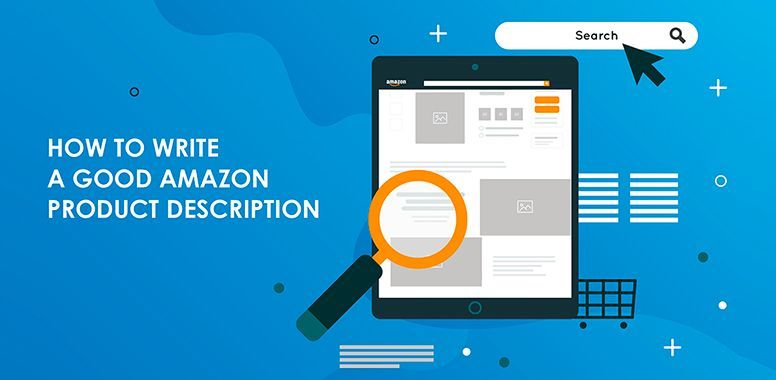Compliance vs. Creativity: Writing Copy That Sells Without Getting Suppressed
Selling on Amazon is a balancing act.
On one side:
rules, restrictions, and compliance.
On the other:
creativity, persuasion, and sales.
Lean too far one way, and your listing sounds flat, boring, and unconvincing.
Lean too far the other, and your listing gets flagged, suppressed, or even suspended.
This is the tightrope every brand faces on Amazon.
The question is: how do you write a copy that both sells and stays compliant?
Why Compliance Matters
Amazon is strict about what sellers can and cannot say in their listings. The rules are in place to protect shoppers from misleading claims and to protect Amazon legally.
But here’s the reality: many sellers don’t even realize they’re breaking the rules until their listing disappears.
Some of the most common compliance mistakes include:
- ❌
Medical or health claims: “Cures acne,” “Heals arthritis,” “Prevents disease.”
- ❌
Over-promising: “Instant results,” “Works 100% of the time.”
- ❌
Banned terms: “FDA-approved,” “Best on Amazon,” “Safe for kids” (without certification).
- ❌
Competitor references: “Better than Hydro Flask,” “Like Dyson, but cheaper.”
Even one wrong word can trigger suppression.
And every day a listing is down = lost revenue.
Why Creativity Matters
Now here’s the flip side.
You can play it too safely. You can strip your copy of anything bold, engaging, or emotional.
But then your listing becomes just another wall of generic text:
“Made with quality materials.”- “Easy to use.”
- “Great for daily use.”
Technically compliant. But does it sell? Not really.
Because Amazon isn’t just about rules—it’s about conversion. If your copy doesn’t excite, persuade, and build trust, you’ll lose to competitors who do it better.
The Secret: Compliance + Creativity
The winning formula is not choosing one side over the other.
It’s blending both.
Here’s how:
✅ Step 1: Reframe Risky Claims
Instead of absolute promises, use safe, compliant phrasing.
- Risky:
“Erases wrinkles instantly.”
- Compliant + creative:
“Helps skin look smoother and refreshed for a youthful appearance.”
- Risky:
“Cures joint pain.”
- Compliant + creative:
“Supports mobility and comfort with consistent use.”
Notice how the copy still feels persuasive—without breaking the rules.
✅ Step 2: Use Sensory & Lifestyle Language
Amazon allows you to describe how the product feels, looks, or enhances daily life.
- “Soft, breathable fabric that keeps you cool all day.”
- “Compact design that fits seamlessly into your travel bag.”
- “Durable build that stands up to years of daily use.”
These statements are descriptive, emotional, and compliant.
✅ Step 3: Focus on the Buyer’s Experience
Instead of promising outcomes you can’t guarantee, paint a picture of the benefit-driven lifestyle.
For example:
- Instead of:
“Lose 10 pounds in a week.”
- Try:
“Enjoy a balanced supplement designed to support your healthy lifestyle goals.”
Compliance means not over-promising, but creativity means still connecting emotionally with your buyer.
Framework: The Safe Creativity Checklist
Before you hit publish, run your copy through this filter:
- Is every claim verifiable? (Can you back it up with evidence, reviews, or certifications?)
- Am I using “helps,” “supports,” or “designed to” instead of absolute promises?
- Have I avoided banned terms? (No “FDA-approved,” no competitor names, no unverifiable claims.)
- Does the copy still feel persuasive and engaging?
If the answer is yes to all four—you’ve nailed the balance.
Case Study: Skincare Brand
A skincare client came to me after their listing was suppressed for “anti-aging claims.”
Their original bullets read:
- “Erases wrinkles instantly.”
- “Reverses aging at the cellular level.”
These are red flags.
We rewrote them into compliant, benefit-driven copy:
- “Helps skin appear smoother and more radiant with regular use.”
- “Designed with antioxidant-rich ingredients that support refreshed, youthful-looking skin.”
The listing was reinstated. But here’s the kicker: sales increased.
Why? Because the new copy didn’t just avoid suppression—it built trust. It sounded
realistic and relatable.
Why This Matters for Brands
Every time your listing is suppressed, you lose visibility, sales, and ranking momentum.
But if your copy is too dry, you lose conversions even while your listing is live.
That’s why clients hire experienced Amazon copywriters. Because we know how to:
- Write
compliant copy that stays live.
- Keep it
creative enough to convert.
- Protect revenue while boosting sales.
Practical Action Steps
- Audit your current listings. Highlight risky claims and generic phrases.
- Replace absolutes with compliant language. (“Helps,” “supports,” “designed to.”)
- Add sensory words. Soft, durable, refreshing, lightweight.
- Emphasize lifestyle. Don’t just describe the product—describe the experience of using it.
- Review compliance regularly. Amazon’s policies evolve; your copy should, too.
Final Thoughts
Amazon copywriting is not about choosing between compliance and creativity.
It’s about
marrying both.
- Too safe, and your listing fades into the background.
- Too bold, and your listing gets shut down.
The sweet spot? Copy that:
- Stays within Amazon’s rules.
- Highlights benefits that matter.
- Inspires trust and drives conversion.
That’s the difference between a listing that merely exists—and a listing that thrives.
💬 If your listing has ever been suppressed—or if your current copy feels lifeless and isn’t converting— We can help.
We specialize in writing Amazon listings that stay compliant, rank high, and sell fast.


